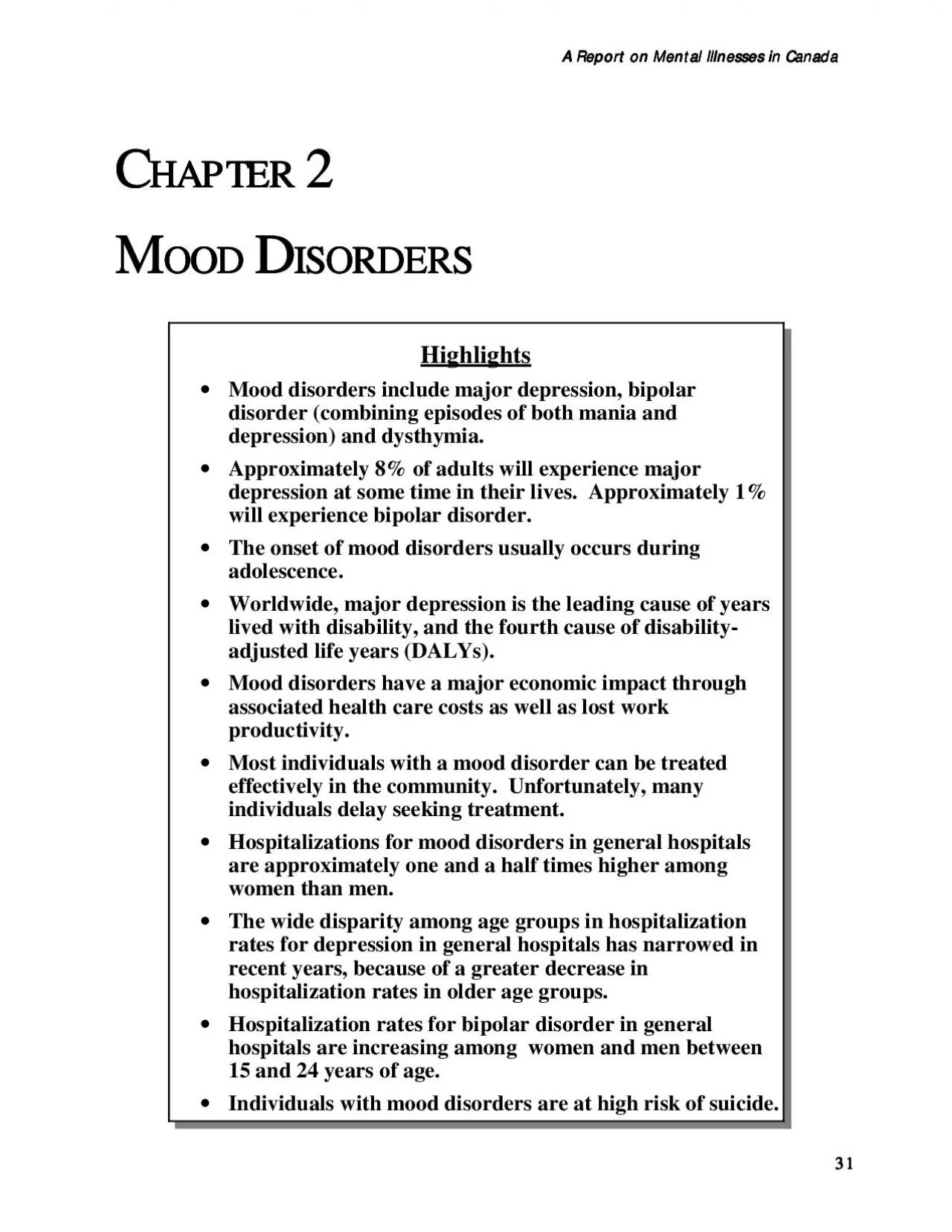PDF-A Report on Mental Illnesses in CanadaA Report on Mental Illnesses in
Author : dandy | Published Date : 2022-08-27
31313131 CCCHAPTER HAPTER HAPTER 222MMMMOOD OOD OOD DDDISORDERSISORDERSISORDERS Mood disorders include major depression bipolardisorder combining episodes of both
Presentation Embed Code
Download Presentation
Download Presentation The PPT/PDF document "A Report on Mental Illnesses in CanadaA ..." is the property of its rightful owner. Permission is granted to download and print the materials on this website for personal, non-commercial use only, and to display it on your personal computer provided you do not modify the materials and that you retain all copyright notices contained in the materials. By downloading content from our website, you accept the terms of this agreement.
A Report on Mental Illnesses in CanadaA Report on Mental Illnesses in: Transcript
Download Rules Of Document
"A Report on Mental Illnesses in CanadaA Report on Mental Illnesses in"The content belongs to its owner. You may download and print it for personal use, without modification, and keep all copyright notices. By downloading, you agree to these terms.
Related Documents














